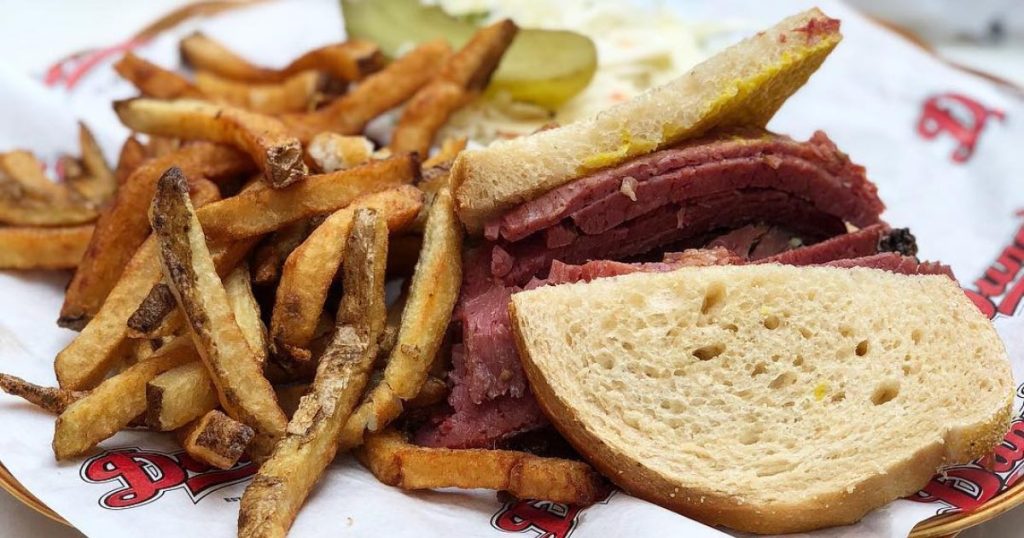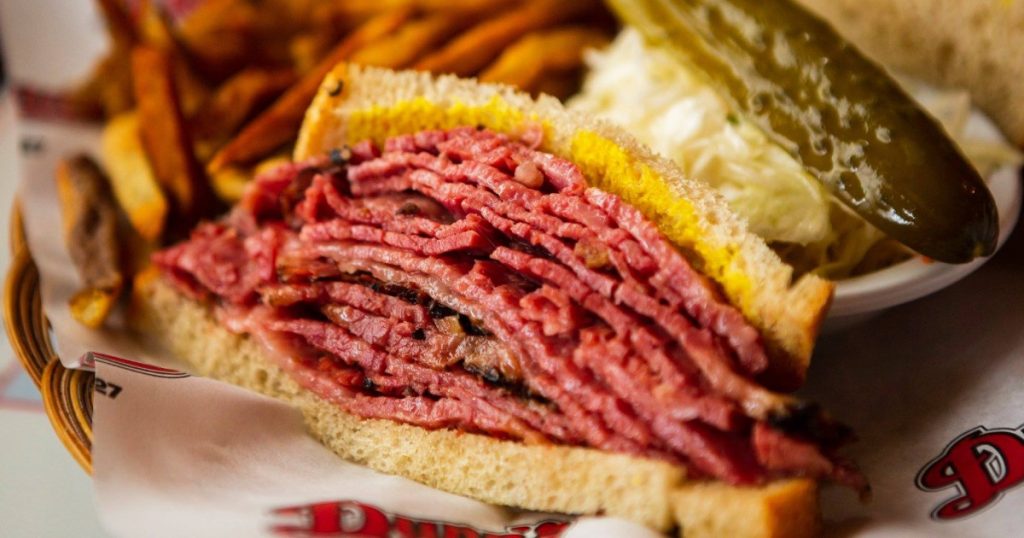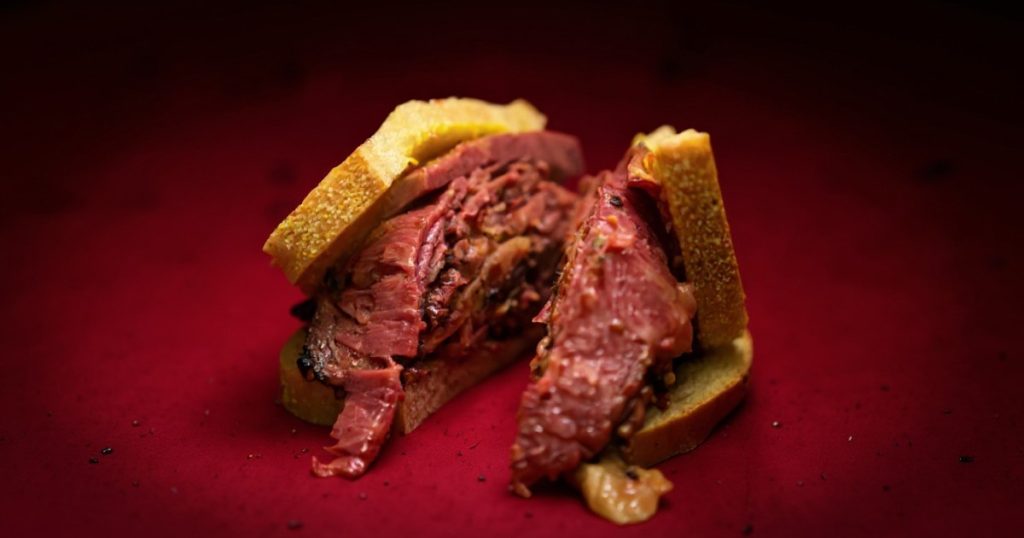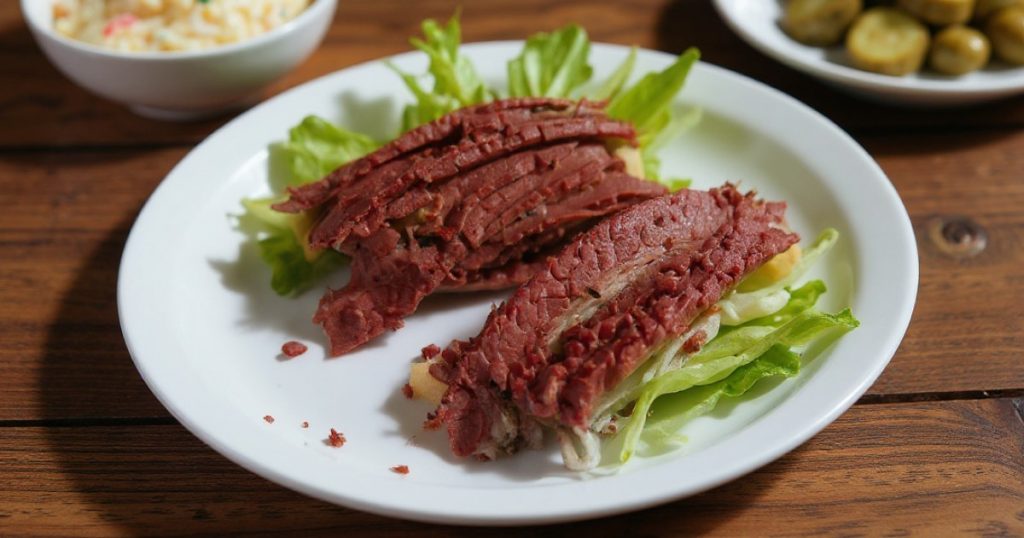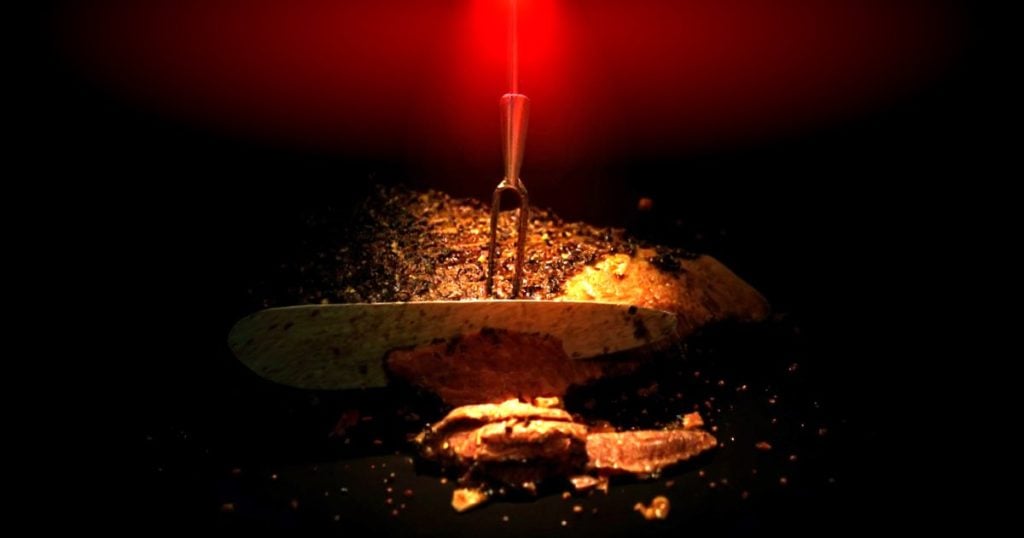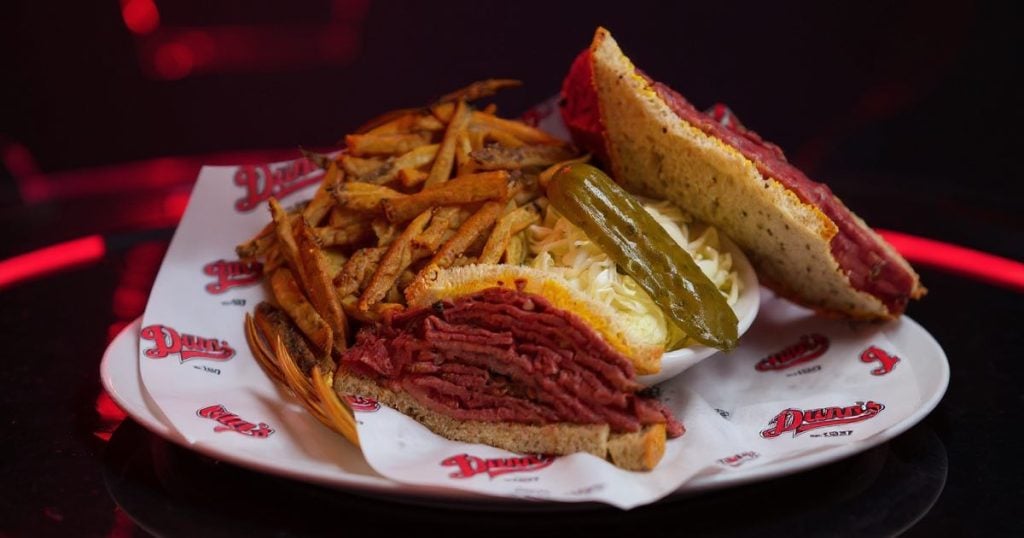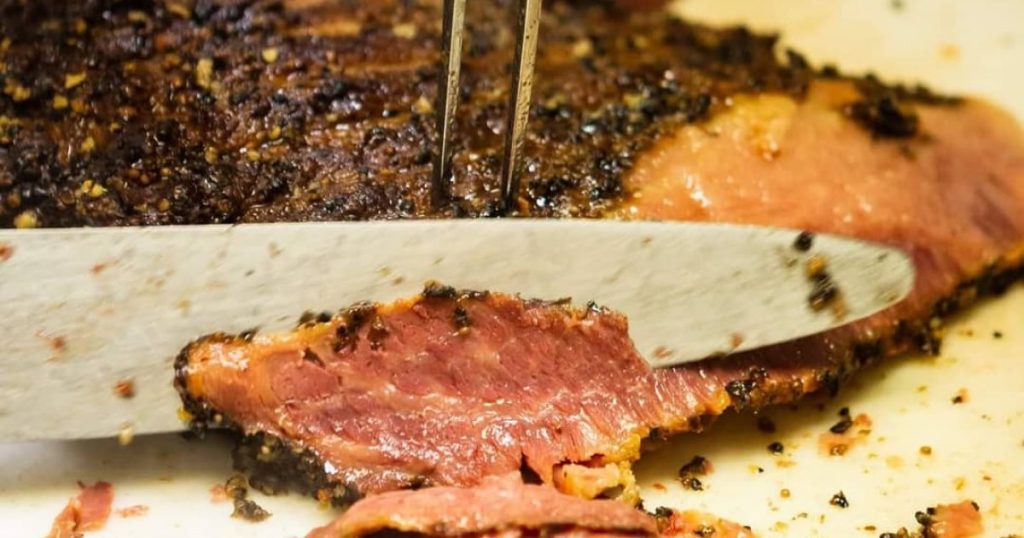If you’ve ever bitten into a fresh-cut slice of Montreal smoked meat for the first time, you might have paused for a moment. The meat is tender, steaming hot, and packed with flavor, but it’s also still pink all the way through. For some, that color can raise a question: is it fully cooked?
The answer is yes, Montreal smoked meat is cooked to perfection. That rosy hue isn’t a sign of undercooking; it’s proof that you’re eating the real deal.
In this blog, we’ll reveal the science, the technique, and the time-honored methods that give Montreal smoked meat its iconic blush from edge to center.
Where Does the Pink Color Come From?
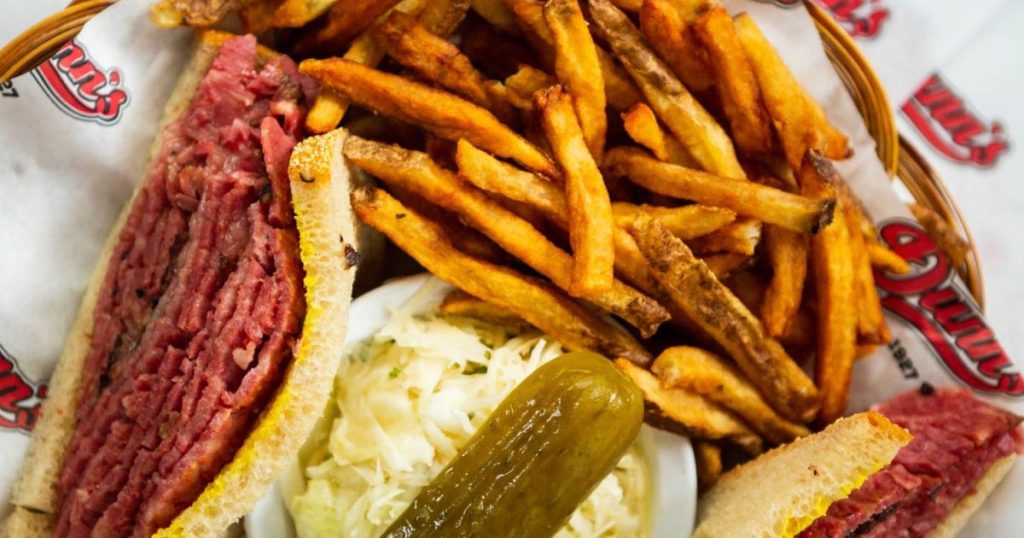
The signature pink color of Montreal smoked meat begins long before it ever reaches the smoker or steamer; it starts with the cure. Authentic recipes use pink curing salt, a mix of regular salt and sodium nitrate or nitrite. These curing agents react with the meat’s natural myoglobin, creating a stable compound that keeps its rosy hue intact even after hours of cooking.
Curing is a slow, deliberate process. Over several days, the mixture penetrates deep into the brisket, evenly distributing salt, nitrates, and flavor. This step sets the stage for its taste, texture, and distinctive appearance.
To build on this foundation, the brisket is coated in a bold spice rub, often made with black pepper, coriander, garlic, paprika, and mustard seed. While the curing salt locks in the color, the spices form a dark, aromatic crust that contrasts beautifully with the vibrant pink interior, making Montreal smoked meat as visually appealing as it is flavorful.
Myoglobin and the Science of Meat Color
At the heart of meat’s natural color is myoglobin, a protein found in muscle tissue that stores oxygen. In fresh, raw beef, myoglobin gives the meat its deep red or purplish hue. The more myoglobin a muscle contains, the darker the meat appears, which is why cuts like brisket start out richly colored.
When meat is cooked with heat alone, myoglobin changes its structure, turning into metmyoglobin. This chemical change shifts the meat’s color from red to shades of brown or gray, the familiar look of a well-cooked roast or steak.
In Montreal smoked meat, this transformation is interrupted by the curing process. Sodium nitrite in pink curing salt binds to myoglobin, forming a stable compound called nitrosomyoglobin. This compound holds its vibrant pink hue even after hours of smoking and steaming. It’s this precise interaction between science and tradition that ensures every slice of Montreal smoked meat is as rosy as it is flavorful.
Why Montreal Smoked Meat Isn’t About the “Smoke Ring”
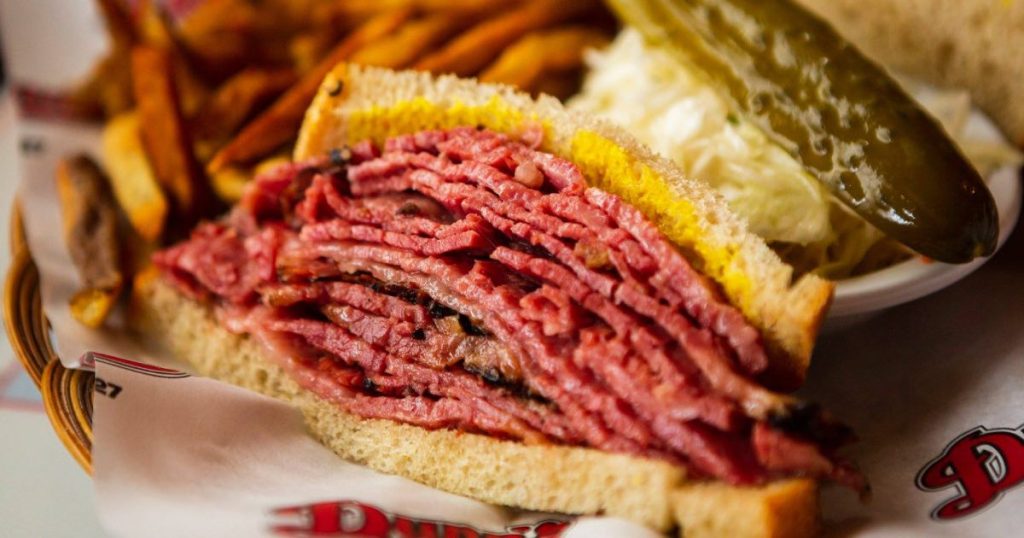
In the world of barbecue, a smoke ring is a prized hallmark, a thin, pink layer just beneath the surface of the meat. This ring forms when nitrogen dioxide from burning wood reacts with the meat’s myoglobin during low-and-slow smoking, preserving the pink color in that outer band while the rest of the meat turns brown.
Montreal smoked meat, however, plays by a different set of rules. Its pink color doesn’t come from wood smoke; it comes from the curing process. Because the curing salt penetrates deep into the brisket, the chemical reaction with myoglobin happens throughout the entire cut, not just on the outside.
How the Process Locks in Color
It begins with curing, where pink salt and spices penetrate the brisket, binding to myoglobin and setting the color. Next comes the spice rub, which builds a flavorful crust without affecting the interior’s hue. A stage of light smoking follows, adding depth and aroma, but not altering the already pink meat. Finally, the brisket is steamed, a step that tenderizes the meat and keeps it moist without dulling its color.
When done right, the result is a slice of smoked meat that’s uniformly pink from edge to center, a clear sign of skilled preparation and adherence to tradition.
How It Compares to Other Deli Meats
While Montreal smoked meat shares similarities with other deli favorites, its color and preparation set it apart. Pastrami is often made from the navel cut, gets a heavier smoke treatment, and may include sugar in the rub, which can slightly alter its appearance and flavor profile. Corned beef, on the other hand, is typically brined and boiled; without nitrite curing, it can lose its pink hue and turn browner after cooking.
Montreal smoked meat’s consistent pinkness comes from its full-brisket cure, balanced spice rub, and steam finish, a method that delivers a distinct visual appeal and a taste experience unlike any other deli meat.
Conclusion
The pink color of Montreal smoked meat isn’t just about appearance; it’s a mark of craftsmanship. From the curing salts that bind to myoglobin, to the spice rub, light smoking, and final steam, every step is designed to lock in flavor, tenderness, and that unmistakable rosy hue.
If you want to see and taste this tradition done right, visit Dunn’s Famous, the best smoked meat deli in Montreal. One bite of their perfectly cured, sliced, and steamed brisket will show you why this iconic dish is as much about heritage as it is about flavor.
